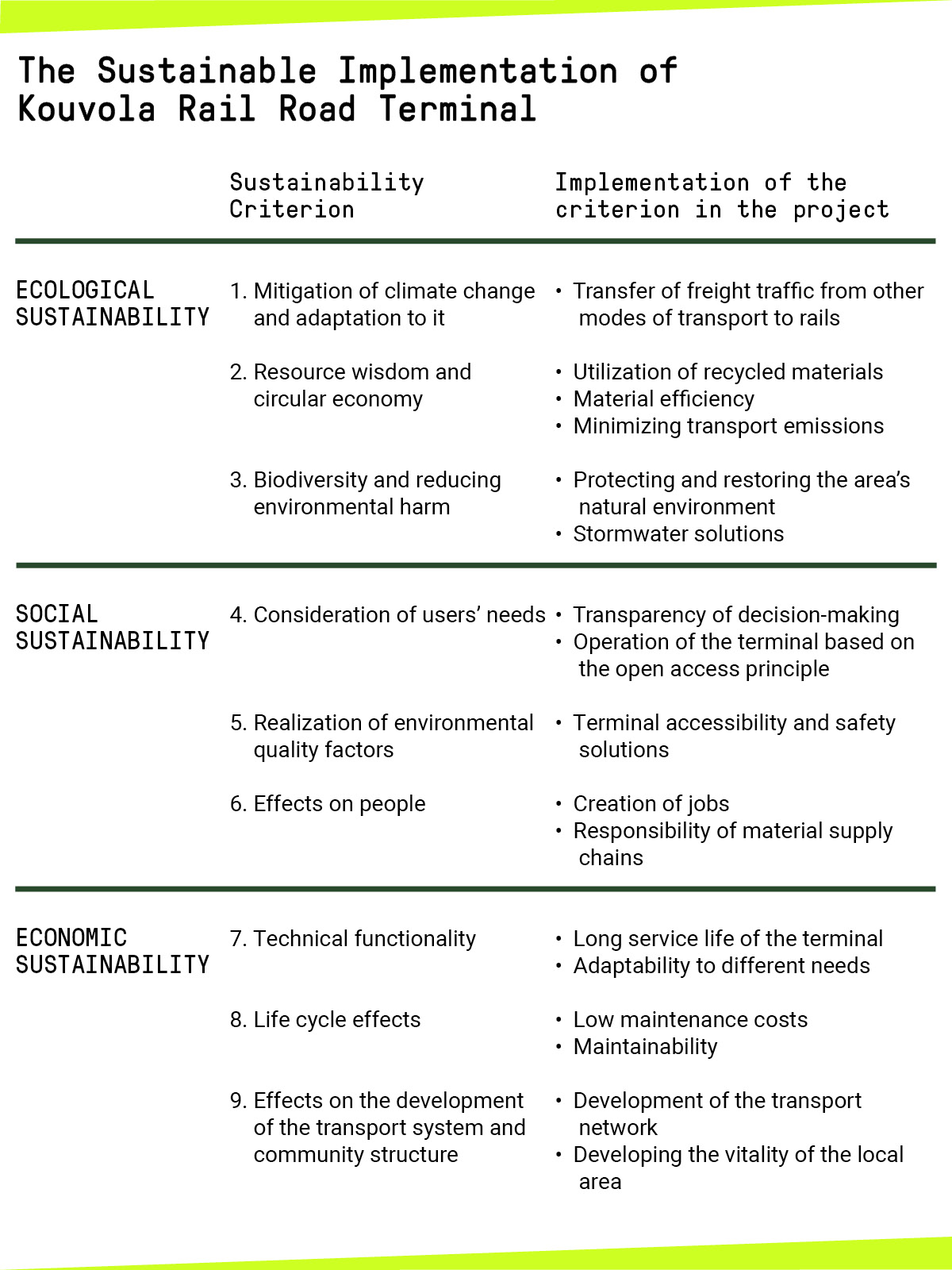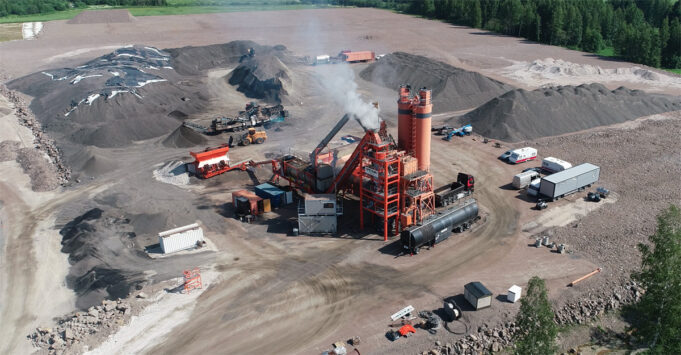Well planned is sustainably made
Kouvola RRT was implemented following the principles of sustainable construction
Sustainable construction consists of much more than just recycling materials. The sustainability of an infrastructure project is assessed over the entire life cycle of the project, from the design table through construction to the use and maintenance of the infrastructure. Most of the emissions, costs and other effects of infrastructure construction are already solved in the planning phase.

Green Building Council Finland (FIGBC) is a cooperation network for sustainable construction, including 160 member organizations. FIGBC defines sustainable infrastructure through nine criteria covering ecological, social, and economic sustainability. All nine criteria have been considered in the planning and implementation of the RRT project.

Ecological Sustainability
Soil masses circulated in the nearby area
In the Kouvola RRT project, ecological sustainability has been considered in selection of materials, in the logistics during construction, and in protecting the area’s natural environment.
“Emissions can be reduced by the recovery of soil and aggregates, as well as resource-wise and low-emission solutions in planning, transportation and construction.”*
In the planning phase of land use, the base soil and landforms were taken into account. Crushed stone and surplus masses excavated from the rocky hill in the area were utilized as far as possible on the construction site. This reduced the need to transport land masses far from one place to another. Crushed rock was used, for example, in the quarry layers of the terminal field and in the structural layers of nearby streets.

Savings with recycled asphalt
“The infrastructure sector plays a key role in promoting circular economy. Virgin materials are replaced with recycling solutions and the generated waste is diverted to a new use.”*
The first step towards implementing the asphalt project sustainably was the early tendering. This allowed the contractor enough time to gather recycled asphalt. It was stored on the project site, ready for use when the paving work would begin.
Recycled material was used in the asphalt mass, except for the surface asphalt of the most heavily stressed sector of the terminal area. Depending on the layer, the proportion of recycled raw material in the mass is up to 50–70 percent.

Greenways and wetlands provide refuge for species in the area
“Biodiversity can be strengthened in infrastructure construction by conserving natural areas, utilizing nature’s own processes in, for example, stormwater management, increasing diversity through green construction and restoring ecosystems, e.g., wetlands in the environment.”*
The effects of the RRT project on the surrounding nature and species have been regarded. A lot of waste brought to the area over time has been disposed of. Pathways were left for the local fauna, such as flying squirrels, to enable connections between different territories. The groundwater area has been considered in the selected solutions and future terminal operations.

Social Sustainability
Kouvola RRT operates on the open-access principle
“The project is promoted in open cooperation between the client, designers, implementers and administrators in order to achieve and exceed common sustainability goals.”*
The project’s supervisor, Ramboll CM, is committed to respecting the principles on human rights, environment and anti-corruption included in the UN Global Compact initiative.

Railgate Finland manages the terminal area and rents storage and office space to companies operating in the area. It develops and manages the terminal’s infrastructure as well as safety and environmental systems. The terminal offers equal and non-discriminatory operating conditions for all companies in the field on the open-access principle.
The terminal area is designed for both heavy and light traffic
“The planning of the infrastructure takes into account the needs of different user groups and ensures accessibility and safety.”*
In the Tehola logistics area general plan, in addition to heavy traffic, the functionality of pedestrian, cycling and public transport connections has also been considered. Security solutions for the terminal area ensure the safety of those moving and working in the area.

In addition to the employment effects during construction, the project will continue to contribute to the creation of new jobs in the Tehola logistics area. The development of the area has created an average of 70 new jobs every year for the past 20 years. The number of jobs is expected to increase further with new companies locating in the area.
Economic Sustainability
Kouvola RRT is an investment into the future
“Modifiable infrastructure creates opportunities for future innovations and changes.”*
RRT is designed to serve changing needs for decades to come. There are very few fixed structures, thanks to which the area can be converted to different uses.

The positive effects of the terminal on the business life of the Kouvola region are also reflected in the city’s economy. The improvement of logistical connections will further improve the conditions for the development of the vitality of the Kymenlaakso province.
*Citations: Kestävä infra, Green Building Council Finland, 2021.
Updated 22.12.2022